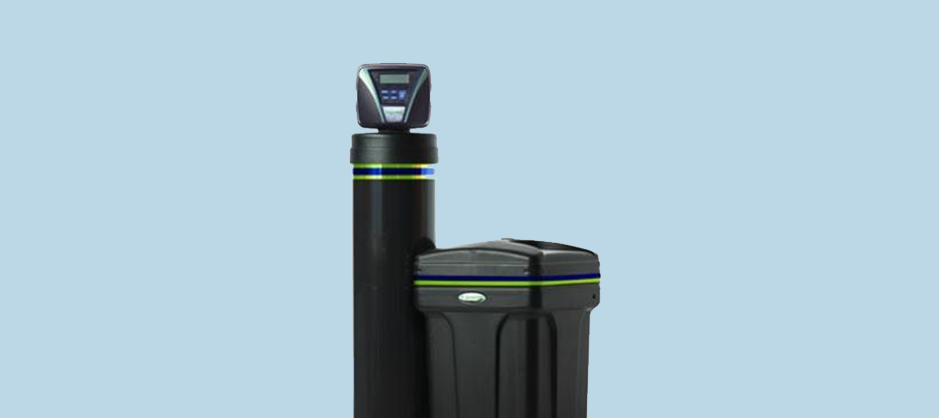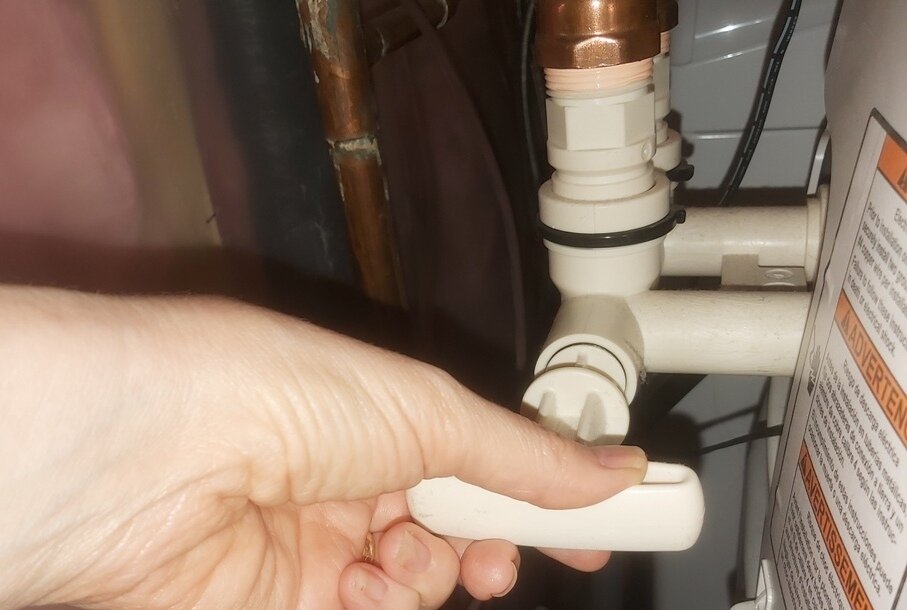A bypass valve for water softener comes in different forms and changes the flow of your water so it’s not sent into the softening process. Here’s what you need to know:
1) What is a bypass valve for water softener?
2) How to activate your water softener’s bypass valve
3) Why put your water softener in bypass mode?
At WaterSmart, we have over 25 years of experience in the water softener and plumbing industry and we'd love to share our expertise with you.
Bypass Valve for Water Softener: Everything You Need to Know
1) What is a bypass valve for water softener?
A water softener bypass valve is a handle, button or lever that changes the flow of your water so it’s not sent into the softening process.
We’ll discuss why you might want to do that more below.
There are 3 main types of bypass valves for a water softener.
Most residential units will have either a valve that you either push in or turn to put your water softener in bypass. Commercial softeners often have a three-valve bypass operation.
To find out what type of bypass valve your water softener has, look at the top or back of your unit. Your bypass valve should be located close to your water pipes connected to your softener.
A turn "to bypass" unit will have one or two handles or knobs that you can turn
A "push to" bypass unit will have a button that you can push in
A lever-style bypass has a lever that you can move from side to side
If you have a commercial unit, you may see three separate valves connected to the pipes which are attached to your softener. If this is the case, contact your water softener company for assistance.
To find out what type of bypass valve your water softener has, look at the top or back of your unit.
2) How to activate your water softener’s bypass valve
A typical household softener will have a valve that you either turn or push to put your water softener into bypass mode.
HOW TO OPERATE A turn HANDLE BYPASS VALVE
Step 1:
Locate the large bypass knob(s) or handle(s) on your unit. Depending on how it was installed, it could be on either the right or left side of your softener.
Step 2:
Turn the knob or handle clockwise (or if there are arrows on your handles then turn in the direction of the arrows) all the way until it stops turning.
It may be stiff, especially if you haven't put your water softener in bypass before or if it has been a long time since you last did it.
Tip: If your handle is really hard to turn you can try turning the water on full blast in your tub or shower to release some of the water pressure going to your softener. This should make it easier to turn.
Step 3:
Once you are finished using your hard water, simply turn your knob or handle all the way back counterclockwise.
Here’s what a typical turn bypass valve for water softener looks like.
HOW TO OPERATE A BUTTON BYPASS VALVE
Step 1:
Locate the bypass button.
Step 2:
Firmly push the button until it goes all the way in. You may need to exert a lot of pressure especially if you haven't used it before or if it has been a while since your last bypass.
Tip: If you are having trouble pushing the button, try turning it clockwise for one or two rotations to loosen it up. If this doesn't work, try tapping it with a rubber mallet. Do not use a regular hammer as this may break the button.
Step 3:
To re-active your softener, simply press the button on the opposite side of your bypass valve.
A softener that isn’t functioning properly can really push your buttons.
HOW TO OPERATE A LEVER BYPASS VALVE
Step 1:
Locate the level bypass valve.
Step 2:
Move the level to bypass mode. Most units will have this written on them. If not, you simply move the lever to the opposite side of where it currently is.
Step 3:
When you want to stop the bypass mode, then move the lever back to its original position.
Here’s what gets a lever valve turning.
3) Why put your water softener in bypass mode?
Activating the bypass valve for water softener means that you don't want your water to go through the softening process.
You want to "bypass" your water softener.
But why would you want to do that?
There are times when you may not require soft water or you may want to conserve water and salt. Maybe you are planning to use a large amount of water and it doesn't have to be softened. For example, you could be:
Watering your lawn or garden
Washing your car
Filling up a pool or pond
Sometimes your plumber may put your softener into bypass when doing some work on your pipes or fixing a leak in your unit. If you notice your water seems hard, now you know how to put it back!
Once the bypass is off, it won’t take very long at all for soft water to start flowing again.
Put your softener in bypass when you’re filling your pool.
Bypass Valve for Water Softener in Kitchener-Waterloo
If you need water softener repair or maintenance in the Kitchener-Waterloo region, you can trust WaterSmart.
We'd be happy to help at a reasonable rate.
Our expert, experienced plumbers will install your new water softener efficiently and at a price that you can afford.
If you purchase a water softener from us, your installation is free!
Contact WaterSmart today for a free quote.
“Friendly, knowledgeable sales staff. Fast diagnosis of our water softener problem. Efficient installation within a week at a reasonable price. We feel good about this purchase.”






